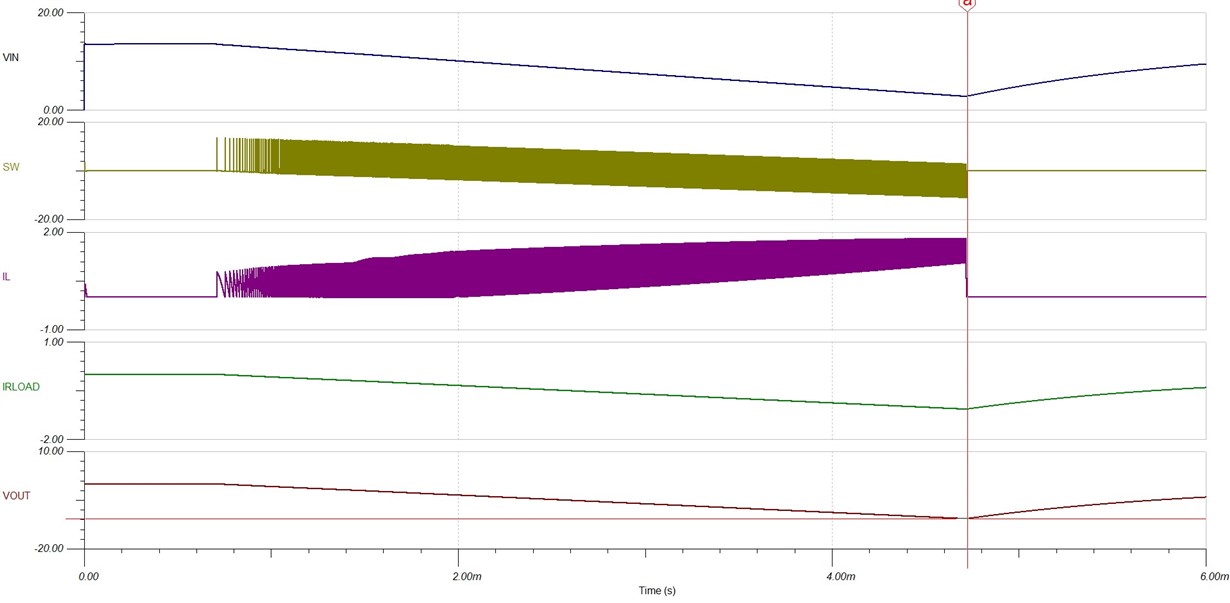Other Parts Discussed in Thread: LM61460
Hello,
I'm trying to make -13.5V from a 13.5V power supply using LM61460, which I'm also using it for positive supply buck conversion.
I referred to the inverting buck-boost converter design documents by TI and came up with the values below.
Blue letters are the calculated values.
| LM61460 | ||
| Nominal Input Voltage | 13.50 | V |
| Input Voltage ripple | 1.00 | % |
| Output Voltage | -13.50 | V |
| Outpu Voltage Ripple | 0.50 | % |
| Max Ouput Current | 2.00 | A |
| Vref | 1.00 | V |
| Rfbt | 806.00 | ohm |
| Rfbb | 10075.00 | ohm |
| Krp | 0.25 | |
| Duty Cycle | 0.50 | |
| Minimum Current Limit | 8.90 | A |
| Inductor Ripple Current | 2.23 | A |
| Ouput Current < | 3.89 | A |
| Rt | 26100 | ohm |
| Fsw | 0.52 | kHz |
| ILavg | 7.79 | A |
| Inductor | 6.72 | uH |
| ILpeak | 8.76 | A |
| ILrms | 7.81 | A |
I chose the RT resistor value of 26.1k to use a 6.8uH inductor that I have.
But like the attached pictures. When I simulate it in TINA, the Vout goes under 0V but doesn't reach -13.5V.
What's even more strange is that the Vin decrease as the Vout goes lower.
I tried changing input and output capacitor values, deleted start-up condition, and the load resistance.
I also tried using snvmbx3 example and snvmbx5 example, but there was no change.
Is LM61460 not suitable for inverted supply?
snvmbx3_13.5V to - 13.5V
snvmbx3_13.5V to -13.5V_Vin drop.TSC
snvmbx5_13.5V to - 13.5V


